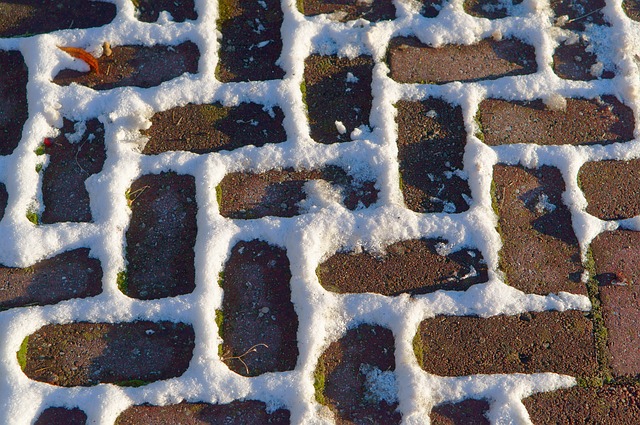Winter can be tough on your asphalt driveway, with freezing temperatures, snow, ice, and road salt all taking a toll on its surface. To ensure your driveway stays in good condition and withstands the winter weather, it’s essential to perform maintenance tasks before the cold season sets in. Good driveway companies always inform their clients of the best winter maintenance tips.
As durable as asphalt pavements are, they can still sustain damage from extreme weather conditions. Also, a well-laid driveway should last more than two decades. However, to keep it looking good for this long, proper maintenance will be required on an ongoing basis. Here are several steps to help you prepare and maintain your asphalt driveway for winter.
Cleaning Your Driveway Regularly
The first step in winterizing your asphalt driveway is to give it a thorough cleaning. Remove leaves, dirt, debris, and any oil or grease stains. A clean surface ensures that any protective treatments you apply will adhere properly.
How to Clean Your Driveway?
- Use a broom, leaf blower, or power washer to remove leaves and dirt.
- For oil and grease stains, use a commercial driveway cleaner or a mixture of dish soap and water. Scrub the stains with a stiff brush and rinse thoroughly.
- Usually, a pressure washer works very well for asphalt pavements as well. Especially, if you have a porous driveway, a pressure wash can help clear those tiny holes up.
Repairing Cracks, Potholes, and Damage
If your driveway has cracks or potholes, it’s crucial to repair them before winter. Water can seep into these openings, freeze, and expand, causing further damage. Fixing these issues early can prevent more extensive and costly repairs later. When left unchecked, cracks will give way to rainwater or melting snow water to get to the inner adhesive layers.
How to Repair Cracks and Potholes?
- Clean the damaged area by removing debris and loose material.
- For cracks, use asphalt crack filler or a patching compound designed for small repairs.
- For potholes, use a cold patch asphalt repair material or consider professional repair for larger holes.
Sealcoating Every 2-4 Years or When Needed
Sealcoating is a vital step in protecting your asphalt driveway from the harsh effects of winter. A quality sealant forms a protective barrier, shielding the asphalt from moisture, UV rays, and chemicals like road salt. It also helps fill in small surface imperfections, providing a smooth, even finish.
How to Sealcoat Your Driveway?
- Ensure your driveway is clean and dry before applying the sealcoat.
- Use a high-quality asphalt sealer and follow the manufacturer’s instructions for application.
- Apply the sealant evenly with a squeegee or brush, working from one end to the other. Allow it to dry thoroughly before using the driveway.
Pay Attention to Drainage
Proper drainage is crucial to prevent water from pooling on your driveway and causing damage during freeze-thaw cycles. Verify that your driveway has a slight slope away from your house or garage. Additionally, keep the edges of your driveway clear of obstructions to allow water to flow freely.
How to Improve Drainage?
- Check the slope of your driveway and adjust it if necessary.
- Install a drainage system, such as a French drain or gravel trench, to redirect water runoff.
- Clear away debris, leaves, or dirt from the edges of your driveway to ensure water flows away.
Snow and Ice Removal Damage Protection
Snowplows, shovels, and de-icing agents can cause damage to your driveway if not used correctly. Be mindful of the following tips to prevent damage while clearing snow and ice:
- Use plastic shovels with rounded edges to minimize surface damage.
- Avoid using metal shovels with sharp edges, as they can scrape and gouge the asphalt.
- Use sand or kitty litter for traction rather than excessive salt, which can accelerate asphalt deterioration.
Keeping Water Runoffs Clear at All Times
Proper gutter and water runoff maintenance can help prevent water from overflowing onto your driveway and causing damage. Clear leaves and debris from gutters to ensure they function correctly, directing water away from your driveway.
How to Maintain Gutters and Downspouts?
- Regularly clean gutters to remove debris that can clog the system.
- Check that water runoffs are directing water away from your driveway, foundation, or walkways.
- Consider installing gutter guards to reduce debris buildup.
Offload the Snow at the Right Place
When shoveling or plowing snow, it’s essential to pile it in locations that won’t damage your driveway or surrounding structures. Avoid creating large snowbanks that can block drainage paths or add excess weight to your driveway.
How to Properly Store Snow?
- Pile snow in areas away from the driveway, such as the lawn or designated snow storage areas.
- Spread the snow evenly to prevent excessive weight on any one part of the driveway.
- Avoid piling snow near your home’s foundation, as melting snow can cause moisture issues.
Inspect Your Driveway Regularly
Before winter arrives, consider hiring a professional to inspect your asphalt driveway. An experienced contractor can identify any issues that may require attention and provide recommendations for maintenance or repairs.
Taking Preventative Measures
In addition to these steps, consider preventive measures to protect your driveway during the winter months. This may include using snow removal tools and de-icing agents that are less harmful to your asphalt surface.
De-Icing Alternatives:
- Calcium magnesium acetate (CMA): An environmentally friendly option that doesn’t harm asphalt.
- Sand: Provides traction on icy surfaces but doesn’t melt ice.
- Urea: A less corrosive de-icing option.
Bottom Line
By taking these steps to prepare and maintain your asphalt driveway before winter, you can help ensure that it withstands the challenges of cold weather and remains in good condition for years to come. Proper winterization and regular maintenance can save you time, money, and headaches by preventing extensive damage and costly repairs. However, if you need professional help, do not hesitate to contact quality paving installations service providers. Problems like cracks and potholes will keep on extending when left unchecked. Also, when you take care of them at early stages, you will be able to avoid having to get the surface re-laid.

















